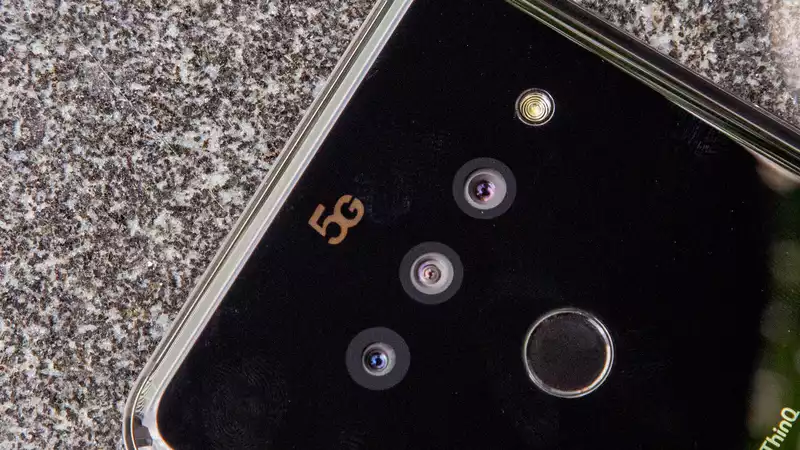5G was supposed to revolutionize the way we work, play, and especially interconnect on the move But judging by the latest data from mobile network analyst RootMetrics, that is certainly not the case today
The good news is that 5G is indeed starting to take shape in the US, and some of the networks coming online are actually delivering quantifiable improvements in speed and overall performance compared to previous 4G LTE networks The bad news is that not all, but the underperforming carriers are not simply failing to meet their speed targets, but are regularly falling behind 4G
The problem is low-band 5G, the kind of infrastructure AT&T and T-Mobile have chosen to build their major 5G deployments on Low-band 5G reaches as far as the cellular data we are accustomed to today, but for a very good, very overwhelming reason: it is not particularly different from LTE, because it is not particularly different from LTE As a result, the speeds offered are not much different As a result, the speeds offered are not much different
Take, for example, AT&T's performance in the Indianapolis round of RootMetrics' latest 5G assessment, released today (March 11) There, AT&T recorded a staggering 386 Mbps peak 4G LTE speed in every test RootMetrics conducted in Indianapolis This is certainly impressive for 4G, and the results are likely to be even more exciting for 5G
Unfortunately, the RootMetrics test did not; AT&T's 5G network never exceeded 175 Mbps in downloads Nor was AT&T the only company whose 5G infrastructure was slow: T-Mobile suffered a similar fate in the same city, recording 83 Mbps in its fastest 4G trial, but 85 Mbps in its best 5G trial
In other words, the uncarrier's much-hyped nationwide 5G network added only 2 Mbps Also, of the five cities tested by RootMetrics, only in Indianapolis did T-Mobile's 5G outperform 4G in maximum speed Even when average performance was considered, T-Mobile and AT&T's 5G throughput often lagged behind 4G in all cities
We saw it firsthand; Tom's Guide's Mark Spoonauer used T-Mobile's 5G network in Manhattan last week with Samsung's new Galaxy S20 Ultra and recorded middling speeds Between Bryant Park and Times Square in Midtown, the $1,400 phone ranged from a disappointing 32 Mbps to an embarrassing 7 Mbps
Thankfully, low-band is not the only feature of 5G There are also midband (which, along with lowband, falls into the same bucket of "sub-6Ghz 5G") and millimeter wave (mmWave) networks, which sacrifice coverage for higher speeds And it is these types of 5G networks that RootMetrics cites as the real changes
On the midband side, Sprint is all in, and its median 5G download speeds consistently outperformed 4G performance in all five cities that participated in RootMetrics' tests The Now network won the most in Chicago, where Sprint averaged only 34 Mbps on 4G, but 136 Mbps on 5G, with a peak 5G speed of 249 Mbps
The downside of midband networks is that while they cover the city evenly and have enough range to penetrate buildings and physical obstacles, the signal is not as strong indoors as it is on low-band networks This means that Sprint's mid-band service is less likely to be available indoors
Then there is mmWave, Verizon's lead entry into the 5G arena These networks are exponentially faster than those in the 6Ghz and below range, at the cost of extreme spatial sensitivity How extreme? First, they must be within line-of-sight of the antenna They must also not be too far away or else they will completely lose their signal For these reasons, mmWave is better suited to dense cities where many 5G nodes can be scattered across building rooftops than to sparsely populated rural areas
Given mmWave's tremendous speed advantage, it is no surprise that Verizon has outpaced its rivals in RootMetrics download figures, reaching 780 Mbps and 845 Mbps in separate trials in Chicago and Washington DC, respectively, and reaching at test was at least 500 Mbps faster than any of the other Big 4 networks
And yet 845 Mbps is a modest estimate of the performance Verizon's mmWave can achieve Last May, I recorded a peak speed of 107 Gbps in the Windy City using a Verizon-connected Samsung Galaxy S10 5G; in Los Angeles in December, I witnessed an astounding 166 Gbps; and in the US, I saw a peak speed of 106 Gbps using a Verizon-connected Samsung Galaxy S10 5G
The primary takeaway from RootMetrics' research is that not all 5G networks are equal There is always a tradeoff between coverage and speed, and carriers that currently choose low-band networks for maximum range, such as AT&T and T-Mobile, are not doing significantly better than the services you have been using for the past decade
Midband, especially mmWave, is where carriers begin to deliver the speeds promised for 5G, the kind of performance that allows you to download a season of a TV show to your device in under a minute Of course, while this type of network also complements traditional 4G LTE and low-band 5G networks well, it is not perfect due to coverage limitations
It should also be remembered that the carriers are in the early stages of rolling out 5G Verizon plans to introduce its own sub-6 GHz service by the end of the year, and AT&T just opened its millimeter wave-based 5G Plus network in select markets this month So each carrier will fill in the gaps in the weakest parts of its network, and even the overwhelmingly low-bandwidth 5G transmission speeds will eventually rise, regularly surpassing the speeds available with 4G LTE today










Comments